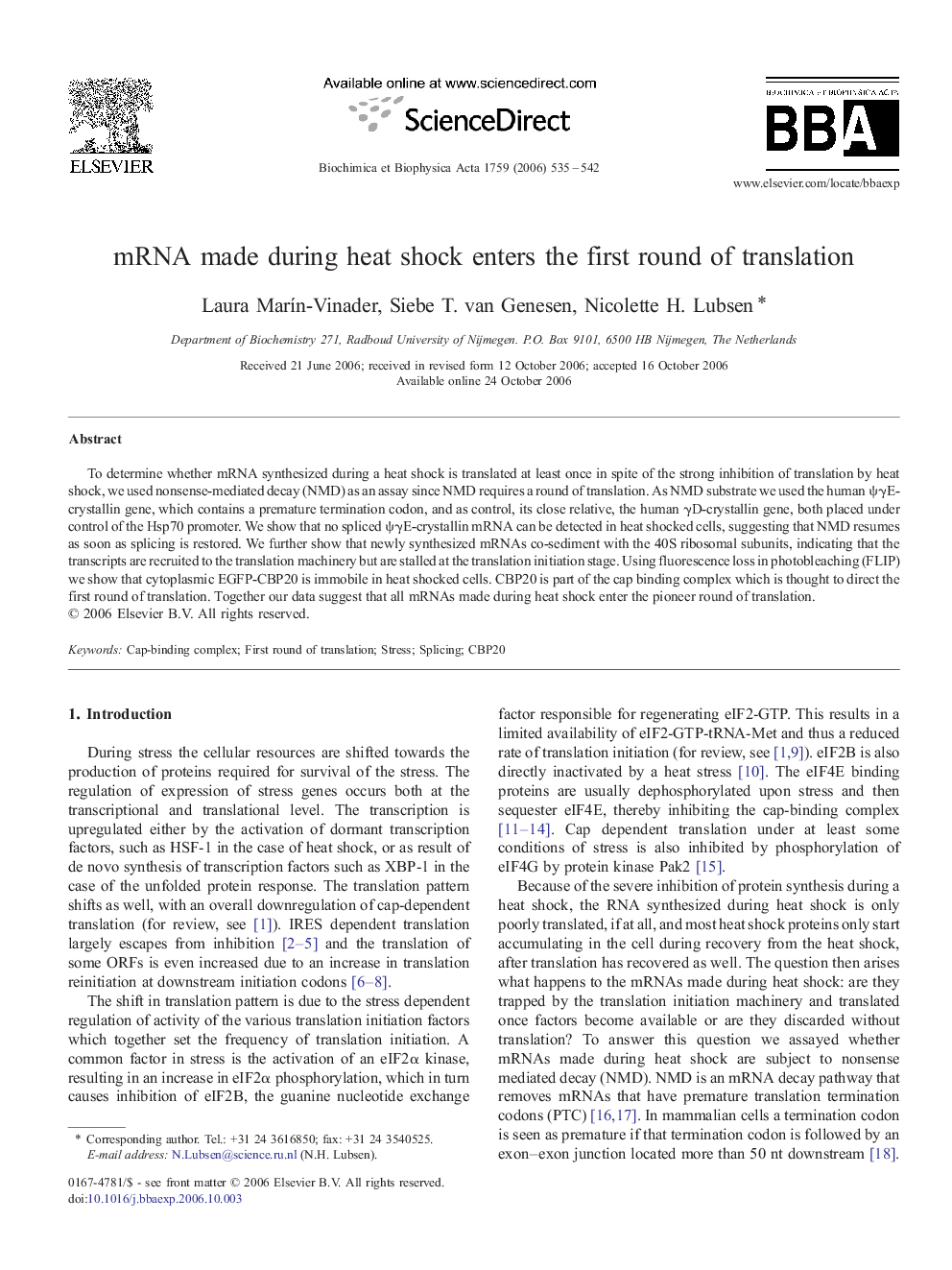| Article ID | Journal | Published Year | Pages | File Type |
|---|---|---|---|---|
| 1947190 | Biochimica et Biophysica Acta (BBA) - Gene Structure and Expression | 2006 | 8 Pages |
To determine whether mRNA synthesized during a heat shock is translated at least once in spite of the strong inhibition of translation by heat shock, we used nonsense-mediated decay (NMD) as an assay since NMD requires a round of translation. As NMD substrate we used the human ψγE-crystallin gene, which contains a premature termination codon, and as control, its close relative, the human γD-crystallin gene, both placed under control of the Hsp70 promoter. We show that no spliced ψγE-crystallin mRNA can be detected in heat shocked cells, suggesting that NMD resumes as soon as splicing is restored. We further show that newly synthesized mRNAs co-sediment with the 40S ribosomal subunits, indicating that the transcripts are recruited to the translation machinery but are stalled at the translation initiation stage. Using fluorescence loss in photobleaching (FLIP) we show that cytoplasmic EGFP-CBP20 is immobile in heat shocked cells. CBP20 is part of the cap binding complex which is thought to direct the first round of translation. Together our data suggest that all mRNAs made during heat shock enter the pioneer round of translation.
